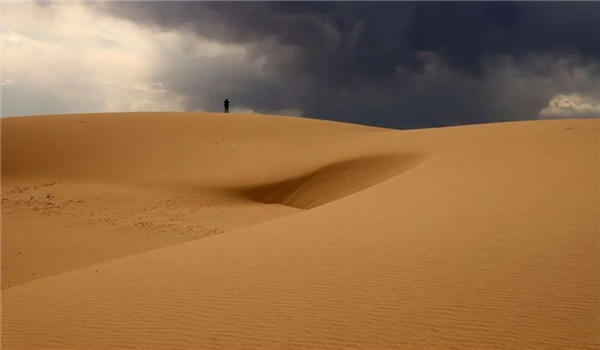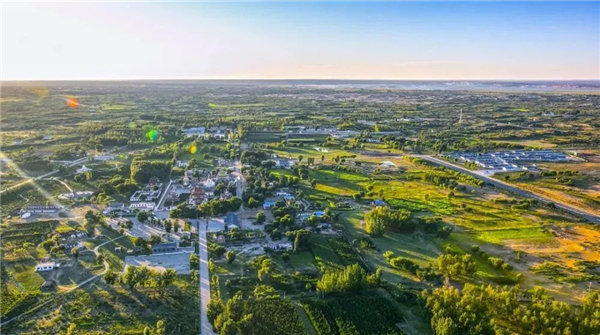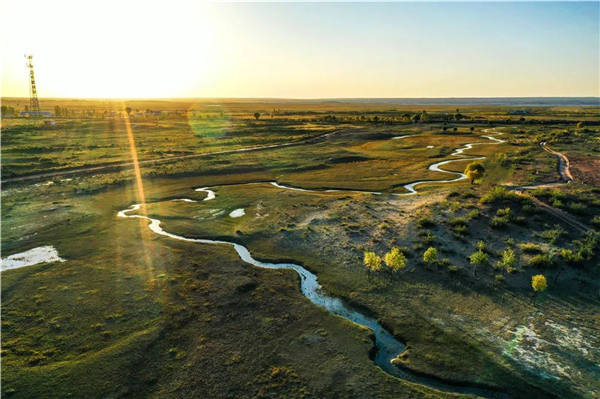Ecological efforts turn once-barren Uxin Banner green
Updated: 2022-06-09 (chinadaily.com.cn)  Print
Print 




Uxin Banner is a striking place, located in the Mu Us Sandy Land. [Photo/Uxin Banner Photographers Association]
Adhering to the concept of "lucid waters and lush mountains are invaluable assets," Uxin Banner has prioritized its environmental health and made significant progress, turning a once-barren sandy area into verdant terrain.
Uxin Banner is located in the hinterland of the Mu Us Sandy Land, which is known as one of the four largest sand-covered areas in China and covers more than 42,200 square kilometers between the southern part of North China's Inner Mongolia autonomous region and Northwest China's Shaanxi province.
At one time, more than 90 percent of the land there was desertified. A whopping 40 percent of the total area was classified as intensely barren land, while the forest coverage rate was only 2.6 percent.
Over a period of 60 years, Uxin Banner was committed to conservation and restoration of the terrain, making it its biggest infrastructure and social project. As a result, an innovative desertification prevention and control plan featuring policy guidance, industry participation and societal considerations was created.
By the end of May this year, the total output value of forestry in Uxin Banner had reached 250 million yuan($37.51 million), and the annual per capita income of farmers and herdsmen working for the forest and sand industries exceeded 2,378 yuan.

These days, Uxin Banner is turning ever greener due to its sustained sandy land prevention and control efforts. [Photo/Uxin Banner Photographers Association]
A total of 195 species of wild animals have been monitored in the banner, including five species under national first-class protection and 24 species under the national second-class protection.
Elsewhere, the 46,600-hectare Mu Us Sandy Botanical Nature Reserve in the banner has long played significant ecological functions such as water storage, water collection and water retention. This has solved the problem of poor drinking water and irrigation for humans and animals in the southeastern part of the Mu Us Sandy Land.
The turnaround in water has also given birth to the Nalin River, Hailiutu River and Baihe River, transporting 323 million cubic meters of water to the Yellow River every year.
Nowadays, the forested area of Uxin Banner covers 5.76 million mu (384,000 hectares) and the percentage of forest and vegetation coverage has reached 32.89 percent and 80 percent, respectively.
To top it off, Uxin Banner has been designated as a National Forestry Science and Technology Demonstration County, a Chinese Residential Environment Demonstration Town, a National Ecological Civilization Benchmarking Flag and a National Ecological Protection and Construction Demonstration Zone and National Garden County.

The once-barren Uxin Banner is nowadays covered by lush, green vegetation. [Photo/Uxin Banner Photographers Association]





 Ordos Impression
Ordos Impression Ordos WeChat
Ordos WeChat Ordos Reported
Ordos Reported
